Anna-Stacia Allen’s Humans of St. Louis Story
December 13, 2020
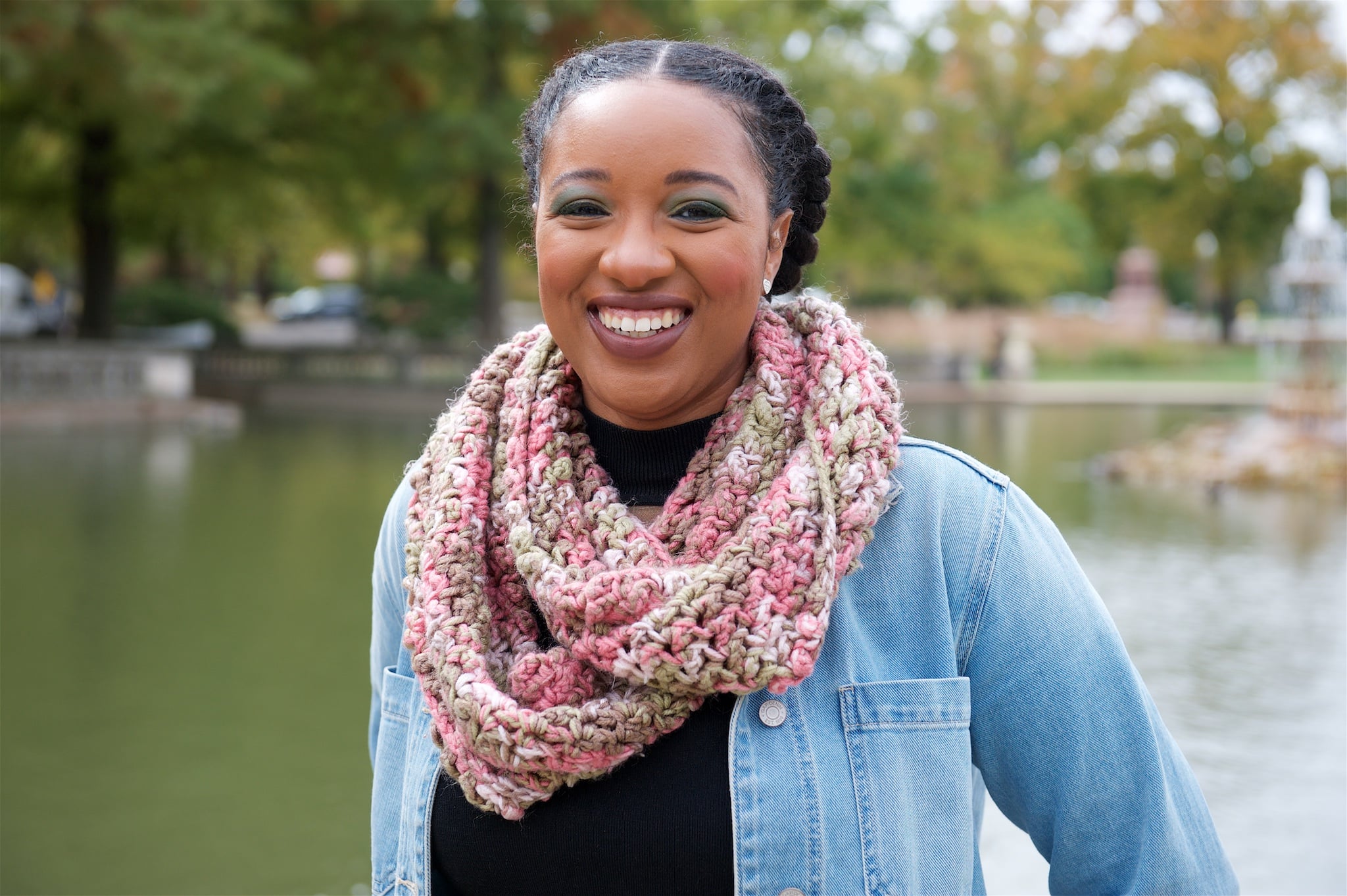
Humans of St. Louis’ co-founder and lead storyteller, Lindy Drew, met with our Executive Director, Anna-Stacia Allen, to hear more about how she came to her position at Navigate STL Schools.
Photostory by Humans of St. Louis / Lindy Drew (Part 1 of 2)
I’m from Toledo, Ohio. Born and raised. My story starts there. My mother and father were very excited to have a child — my father more so than my mother. He was 31 when I was born. He’d been in the Navy and traveled all over the world. I was originally due on October 10th, but I was born on November 5th. Everybody in my family will tell you I came out with teeth reading the newspaper. I’ve heard stories about me since I was a child. Nobody has ever changed details. I was two months old, sitting on my grandfather’s lap, reading the newspaper. My eyes were moving and I changed the page back when he changed it. At that point, my father bought me Hooked on Phonics and made my mother do it with me every day.
Eventually, when he worked the third shift at Chrysler, he would stare at me in my crib and then go to work while I would be at home making animal sounds and reading books. That was really important because I had a late birthday so I had to start school late. And I was still the oldest person in my class because, you know, born in November. Then in 2nd grade, I would continuously get sent home from school. My teacher told my parents I was a behavior child, I might have ADHD, and I wasn’t doing well in school. So my parents sat in on a class and were like, “Nah, she’s not bad. She’s bored. The person you’re describing isn’t our child and the work you’re giving her is work she’s been doing for years. She doesn’t feel challenged here.” That’s when I was tested for “gifted and talented.” From there, my life changed a lot.

One day a week, I was shipped off to this program called Horizons where I got to be with other kids who enjoyed learning and being smart as much as I did. I got to do advanced work, then I’d go back to my regular school every day where they’d just give me 4th and 5th work in the 2nd grade instead of changing my grade because they didn’t want me to be left behind socially. I started to view education in a way in which everywhere I went, I was going to be different and I’d be doing things differently than other kids and I’d be smarter than other kids. All through junior high and high school, I did AP and honors classes. I graduated high school a year early. I had the highest GPA in the school. So I went to The Ohio State University with a full academic scholarship through a program called Young Scholars.
Well, the other scholarship recipients were mostly first-generation kids from inner-city areas in Ohio. And I will never forget the day it was winter quarter during midterms week and all six of us had the same moment. We sat in the middle of a circle, we all looked at each other, and we cried. It was like, “We used to be smart. What happened?” First semester it was, “We don’t know how to study for college, but we’ll get it together.” Next semester, it was, “Y’all, we about to fail. What is going on? I’ve never gotten a ‘C’ in my life. How do I build my identity around this? Why are we stupid? Who set us up?” We all started talking about our experiences being these gifted and talented Black girls and how everybody told us we were so great and so smart. It wasn’t like we weren’t smart. It’s just that we were not prepared for that type of academic rigor because nobody ever challenged us. Instead, it was always, “You’re smart enough to figure it out.”

Eventually, we got it together and I went on to work at my alma mater doing diversity programming. It was fun because I was helping kids get through college. I started to realize, students have all these supports to get to college. And once you’re there, there are so many people holding their hand. Then there’s that classic line in freshman orientation: “Look to your left, look to your right. The person sitting next to you won’t be here at graduation.” Well, when I graduated, a lot of the people I had come in with from my scholarship program were not there. Listening to kids tell me why they were leaving college or feeling like they weren’t capable enough, I started to see more. And it was even relevant in understanding pressures from my own family.
I didn’t go to grad school right away because my mother had lupus, my younger sister had lupus, and I couldn’t leave home. I got cussed out going to college because, “How could you leave your mother when she’s sick?” So I knew I couldn’t leave again. For undergrad, I told them I was leaving to get a better life. I got a job. Then it was time to take care of my responsibilities. So I was starting to understand and realize there was nobody in the community teaching inner-city kids, rural kids, kids who come from non-academic families, what it means to actually be in college and be a good academic. Students weren’t going home because they were failing. They were going home because the rent is due and your little sister don’t got no shoes and there are no groceries in the house and your grandmama is sick and nobody else can take care of her because so-and-so got kids.
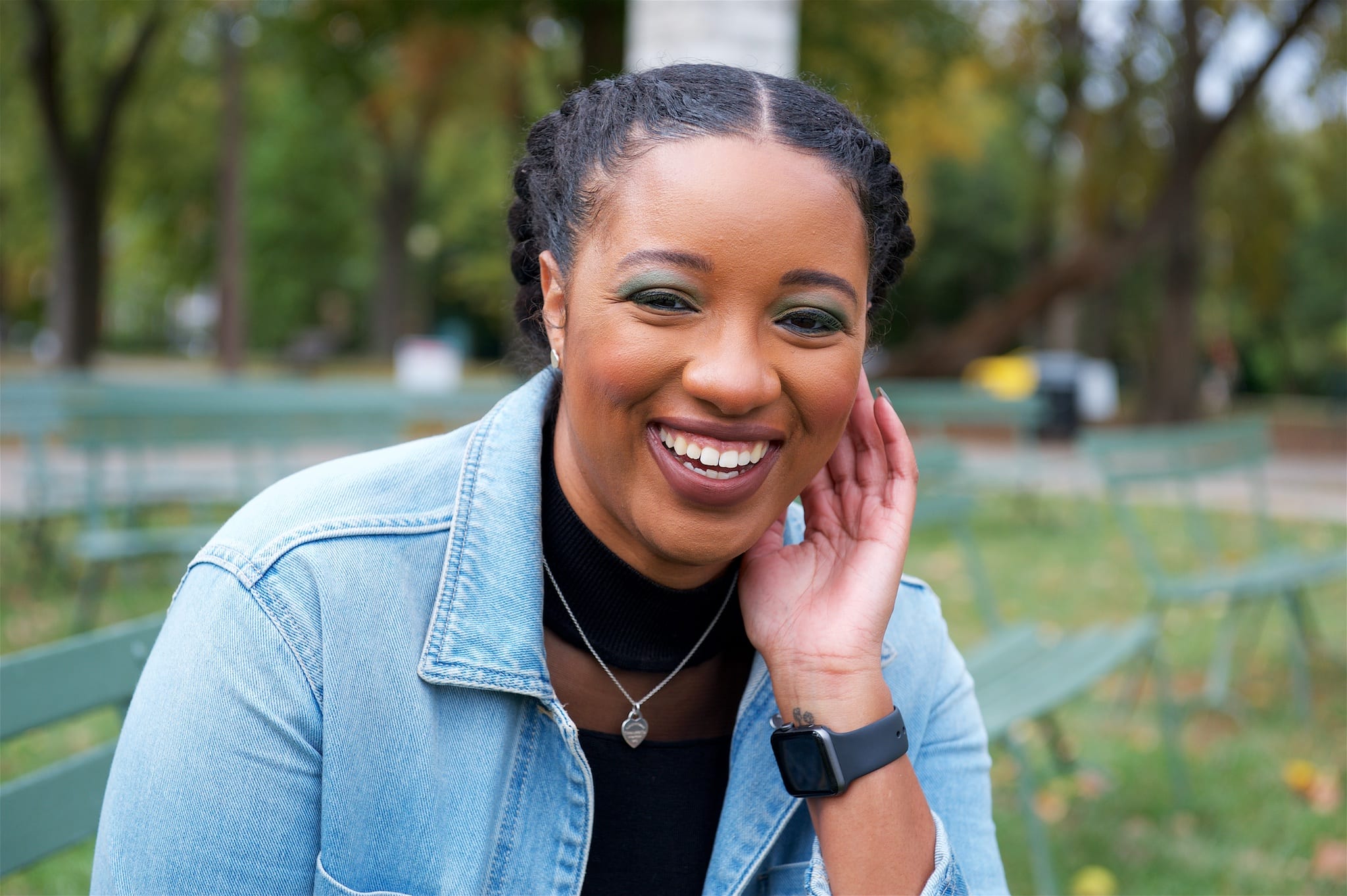
I realized I wanted to work in nonprofit, so I started doing community organizing around the Affordable Care Act. But I thought, “I do not like politics or the bureaucracy. I really enjoy education. I’ve always been passionate about it. Let’s go back.” And that’s how I ended up in St. Louis. Being very much in love with Nelly, this was always a place I wanted to be. I figured, “It just looks so great in all the music videos. This is going to be a great place. I’m so excited!”
Before that, I knew absolutely nothing about St. Louis. I had been several times and on every occasion, I was just looking for Nelly. So I moved here right in the midst of the Michael Brown trial and it shot me into St. Louis as a civil rights city. I got a job in East St. Louis, came for my first interview, and was staying with my sorority sister who was here for Teach For America. So I asked her, “Why do they call the East side of the City, East St. Louis? Why don’t they just call it St. Louis?” And she looked me dead in the face and said, “Yeah, sis. Because it’s in Illinois.” I was like, “Huh? That doesn’t make any sense?”
So I crossed the river and realized that it’s a completely different space. And being in East St. Louis — recruiting talent and working with kids, volunteers, and community organizations — I learned a whole lot about K-12 education. It taught me about power dynamics, funding, community grit and all of those things. I ended up running an AmeriCorps program to help kids in the East St. Louis School District improve their behavior, grades, and attendance. And it was pivotal because our goal was to hire 90% of the staff from that community. That meant the 60 scholarships we had to give away would be reinvested yearly into students or people from there who wanted to go back to school and get a better education.
Two years later, my little sister got sick and I had to leave. I moved to Texas to try corporate America thinking, “I have all these family responsibilities. I’m going to be a new person.” And it did not work.

My sister got diagnosed with lupus when she was 12 years old. I diagnosed her because my mother got diagnosed with it when I was six. I remember my mom had these rashes and would always be sick and tired. So at a very young age, I got shoved into this very adult role in my family. I learned to cook and clean and do my hair and do my sister’s hair and still be a student along with making sure my mother took her medication, keeping track of doctor’s appointments, and all this stuff that no six-year-old should be doing. But, I did it. Because I could. And I was the oldest. And my mother and father were not married. And even though my mother has six sisters, they all had their own families and other things happening.
So when my sister started getting these rashes and was very tired all the time, my mom would say, “She’s being lazy.” That’s when my mom and I had to have a real heart-to-heart and, eventually, she took her to the doctor. At 13, that’s when my sister actually got diagnosed. That year of her life was a really transformative time for her and for our family. I made a promise to her that she could do whatever she wanted to do in her life. And, as her big sister, I was going to make sure that that was possible.
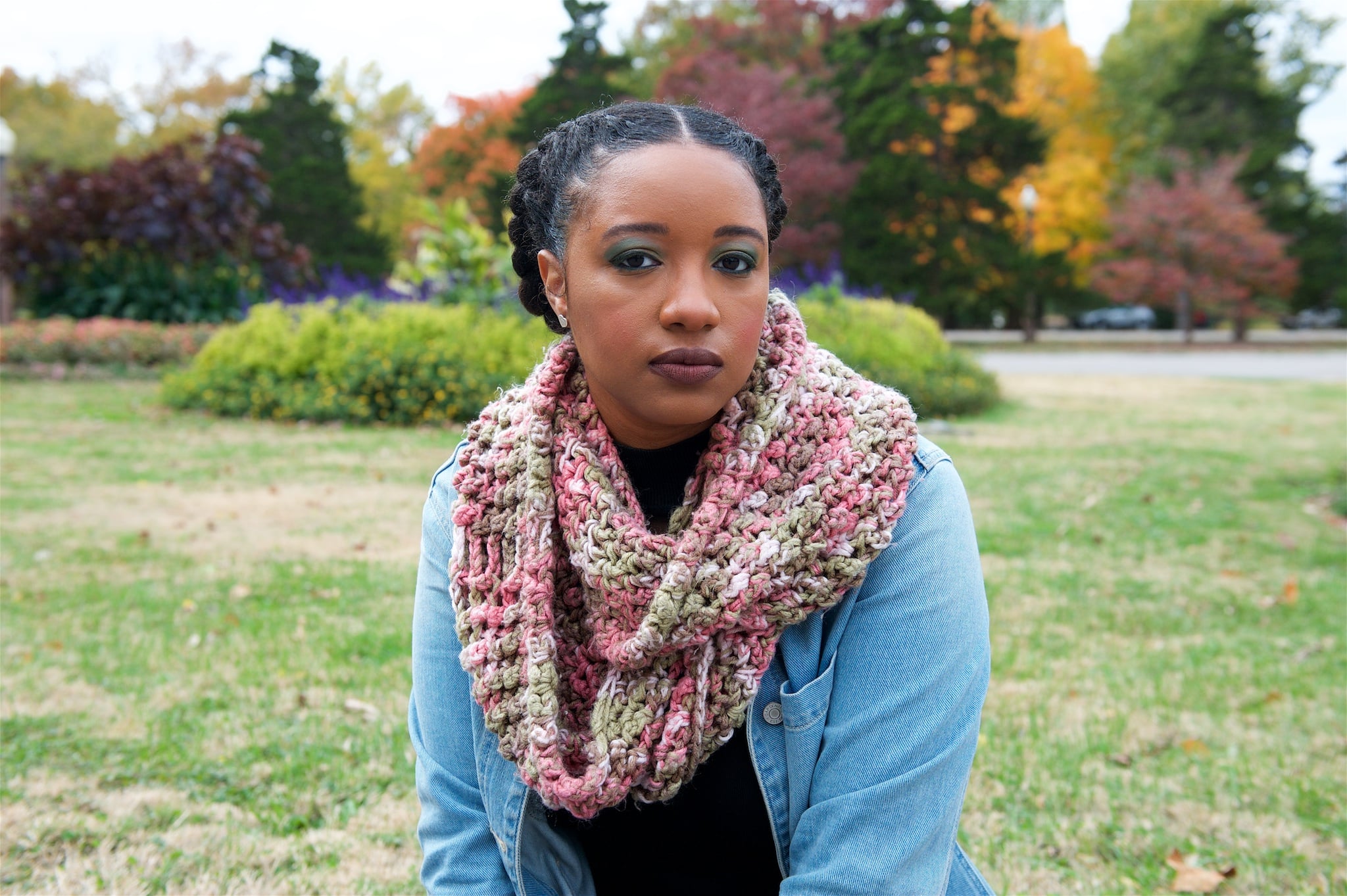
My sister graduated high school and went to Bowling Green State University. Then, she and my mother moved into my house and that’s when my sister had kidney disease and went into kidney failure. She had to get chemotherapy. During that time, we walked around the block one day for two hours and I told her she should make a list of all the things she wanted to be able to do. She said she wanted to go to grad school in Texas, so we made that happen. And, honestly, for someone with a chronic auto-immune illness, she did not need to be in a super hot climate that put a lot of pressure on her body. She should not have lived alone, but she wanted to have that level of independence. And she should not have been trying to work and study, because lupus is a disease activated by stress. But, she was determined.
In her last semester, she started having mini-strokes. At first, the doctors didn’t know what they were. She would black out while she was driving and she got into a car accident. She couldn’t work anymore, but she finished school. And then she got really sick. With the progression of her disease moving really, really fast, she got worse. Her lupus was flaring up. She was having a gluten deficiency. It was just all these things popping up at one time. Her insurance and her doctor were in Texas, so her moving to Missouri wasn’t really an option because the state didn’t have open enrollment for health insurance. I knew I had to go to her in Dallas. So I left St. Louis and East St. Louis and went to be with her.

I was a very selfish college student, which is why I was not selfish after I graduated. There were lots of things that happened while I was in school, but I was just so laser-focused on, “If I get this thing done, then I will be able to better control the other parts of my life.” So I had to let go of the things I could not control, focus on the things I could, and, hopefully, when I was done, I would be able to rein it all back in. I told my family, “If you give me this opportunity to not have to be responsible to you for four years, afterward I will take care of you.” That was really important to me because I was always told that education is this great equalizer. And if I want to make the family better, if I wanted to give us more opportunities, then I’d have to put myself in the best position possible. And that meant I needed to go get a degree. When that was all said and done, I got a job, I paid the bills, my mother and sister lived in my house, and I kept my end of the bargain.
That brought me to McKinney, Texas, where I learned about money. I grew up poor. I worked in poor communities. I’m this champion for disenfranchised people because I have been disenfranchised. Then, I was thrown into McMini mansions and moms who don’t have jobs and who drive Mercedes trucks and whose children are given everything. I was working for an extracurricular program at a technology school and parents were paying $250 a month minimum for their kindergarteners to go to eight computer classes a week. I had left a community where $250 a month could really change somebody’s life. But, experience taught me how to interact in school districts, talk to wealthy parents, and understand some of the things they cared about. The owners were this great Indian couple who let me start programs for minority children in STEAM. And part of the job meant I could give away scholarships to summer camps, which made me happy, too, because I was still able to bridge the equity gap.

Then, right before Christmas in 2017, I watched my sister have a stroke right in front of me. And I knew she was having a stroke because there’s this episode of Grey’s Anatomy called “The Golden Hour,” where Lexie Grey is dealing with this man who has a really bad migraine. His face goes slack and then his shoulder and eyes do too. And Mer’s like, “Oh my God, he’s having a stroke. You have to go save him!” So I told my sister, “Hold out your hand.” And she couldn’t hold it straight. Her face started slacking. So I drove her to the hospital. That was the moment my whole life shifted. She was in rehab for two and a half months. We spent Christmas and New Year’s in the hospital. Valentine’s Day, my mom came, we broke her out. And then the last movie we went to see together, the weekend she came home from the hospital, was “Black Panther.” It was like, “This is it.” In July of 2018, she died.
She had been back in the hospital for this weird blood disorder that was complicated by her lupus. The doctors could not figure out how to get it under control. There was a morning when I was at work, my mother called me hysterical, and the doctor got on the phone to tell me I was the person responsible for my sister as her power of attorney. I had to make the decision for her to have brain surgery to reduce the swelling in her brain, even though everybody knew it wasn’t going to keep her alive, but so when she died, it wasn’t painful. And then I had to go make the decision to pull the plug.
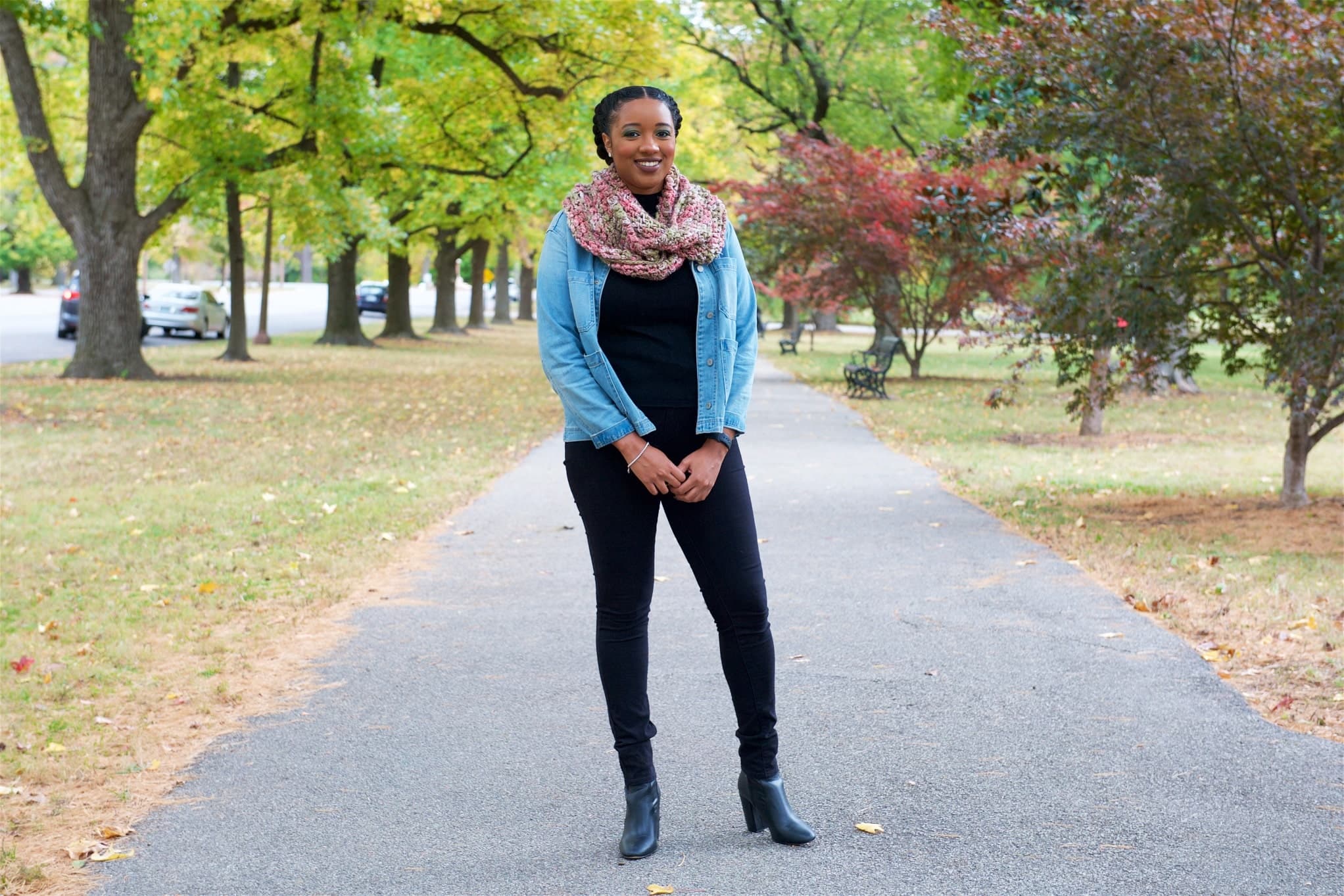
That affected me a lot mentally, but because I don’t really process emotions, for the next year I was laser-focused on all of these things I needed to do and this mission I thought I needed to have. Then in July of 2019, I had a whole nervous breakdown. Like, “I am not in a job I am passionate about. I am not working with the community I am passionate about. I don’t have my sister. I don’t have my best friend. I am in Texas. All of my family is in Ohio. I feel disconnected from everybody and everything.” At that point, I had cried maybe three times since my sister died, and almost all of those times were within a month of her death. I had not truly processed anything.
In the weirdest turn of events, I was watching “The Lion King,” and you know the part where Mufasa’s telling Simba to do what he was meant to do? Well, after watching this live-action movie with Beyoncé, who’s all about female empowerment and, “You can do this!” and all that jazz, I sat in my car and cried for two hours admitting, “I’m not happy. I have to figure out how to change my life. I have to figure out how to start doing something that means something. How can I be passionate about something again?”
I told my job I was quitting. I left. I went back to Ohio. And I stayed there and sat still for the first time in my life. Even on my birthday after my sister died, I took a trip to four different countries by myself, was hugging kangaroos in Sydney, and I did not know how to just be in the moment. Being still was freaking me out because I didn’t want to be with my thoughts. I’d be in this beautiful serene place in Bali, literally at a silent retreat, learning how to meditate, and thinking, “Hmm. I wonder what the bugs are thinking?” I didn’t want to be alone with my thoughts. So I went back to Ohio, sat still for nine months, did not engage in things, and figured out what was important to me.
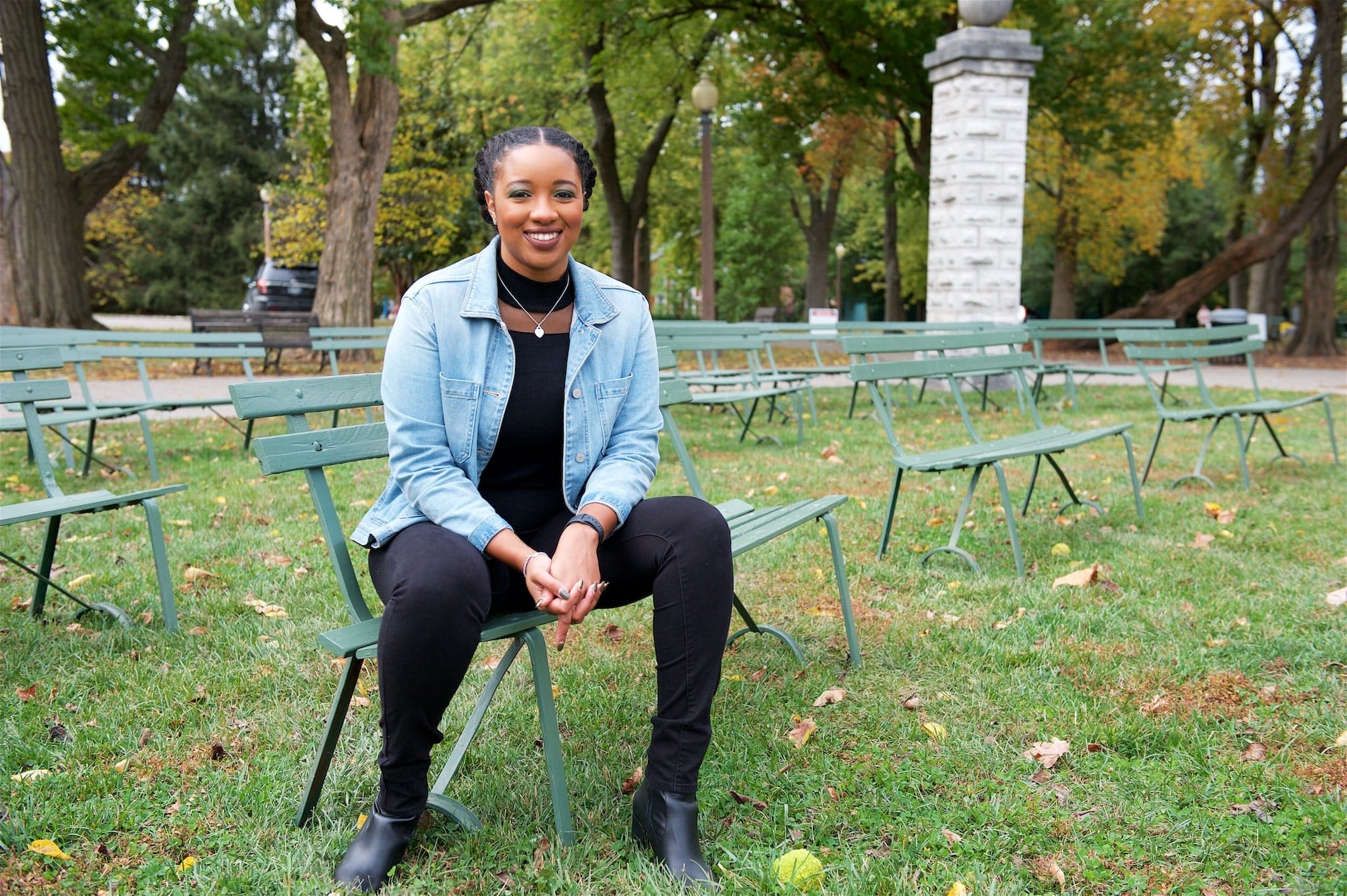
I started doing diversity programming for Boy Scouts of America and working with inner-city families and school districts to bring them character education programming. I knew I needed to make money, so I took the job even though I thought I didn’t much care. But what I found out is that I do care. I cared about the way they treated Black and Brown boys and about the disregard within which some of the programs were being handled. And regardless of what I did, I kept coming back to education. So I had to decide what I wanted to do with my life next. As I was processing all these things, I thought, “I love Ohio. I hate Ohio. Ohio is Ohio, but it’s not where I feel like a whole person.” I tried to figure out where I felt most at home, and that was St. Louis.
I came across this Executive Director role with Navigate STL Schools while scrolling through Indeed one night at three o’clock in the morning and it was honestly a prayer. I felt like, “I am not happy. I have healed past the fact that my sister died and I lost my best friend. I can say those things without crying. But, this place is not it. It’s too draining to be here.” I was reading the job description, researching more about the community that had changed so much since I had left, and I felt like, “These are the things I’m passionate about. I want to help kids become more invested in their education, to contribute to a community that I feel elevates me and that I can also elevate, to be at the forefront of changing the trajectory of people’s lives, empowering people to help themselves.” Reading more about the position, I applied. There was this long process that meant lots of working with the organization, putting together plans, and really thinking about the work that needed to be done.
I decided, “Let me just send my resume. See what happens.” From there, they emailed the position description and I almost didn’t go further because I had to submit a full executive summary, create a budget… It was just so much stuff to do. I ended up calling several of my sorority sisters and my boyfriend, like, “Tell me I’m good enough for this. Tell me I’m capable. Tell me I deserve this.” And they’d tell me, “You know this stuff. You can do this. You should go for it.” And I got the job offer.
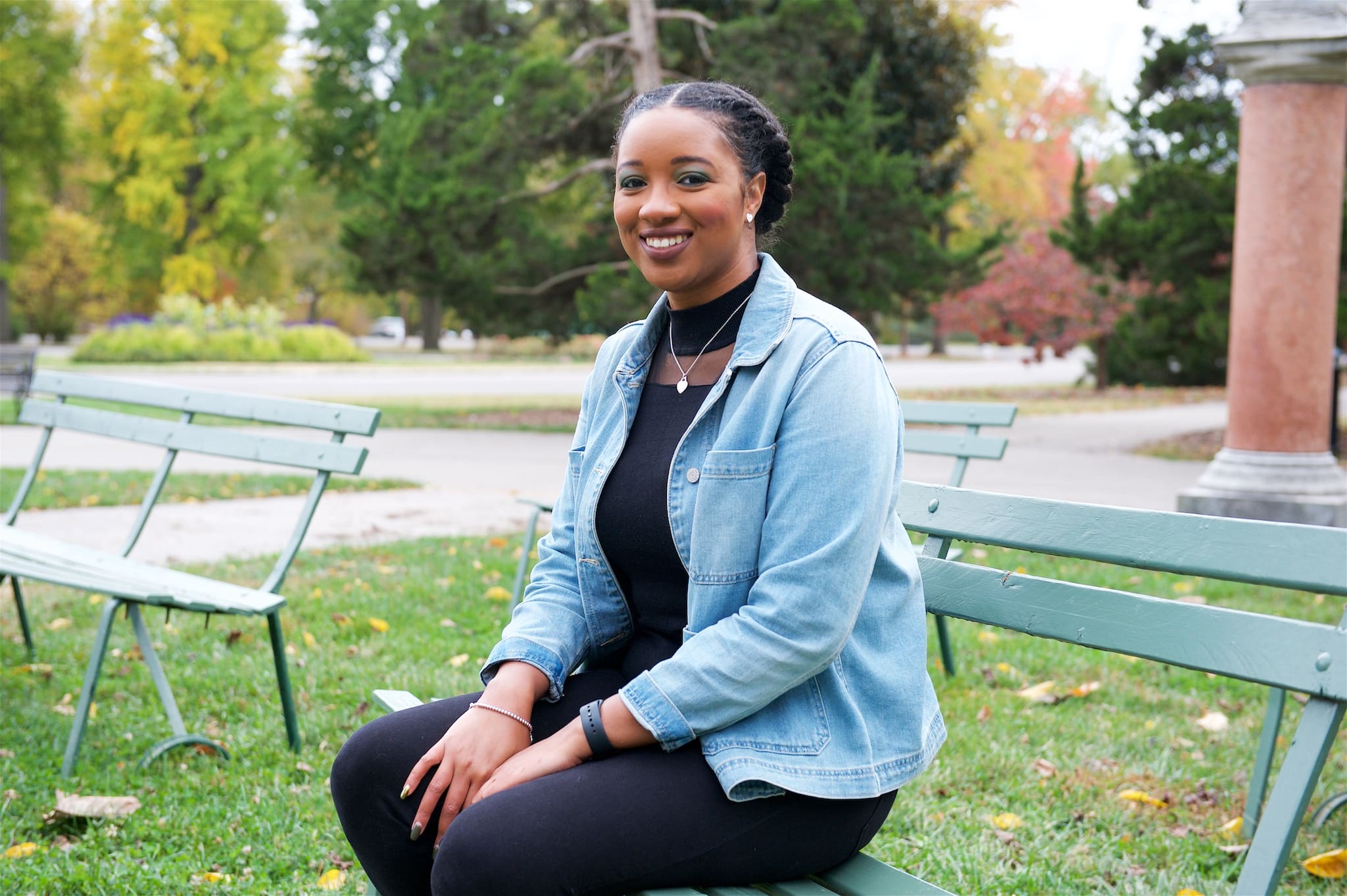
When I got the job offer, it was at a really low point in my life. I had just dropped my mother off at the hospital. I thought she had COVID. She had this bad eye infection. The medical staff told me I couldn’t stay. They were talking about having to do surgery. It was a lot. I called my dad. I was sitting in the car bawling, and I told myself, “I just need to turn everything off.” I thought I had turned my phone off and then I got a call from the board president saying, “We want to offer you this job. We’ve been working with you. We think you’re the best candidate. Let’s do it.” I was like, “Wait a minute. For real?” And that’s the point I knew, every decision I had made had been right.
My mom used to say, “You can’t really clean up your room until you mess it up.” So I had to kind of throw everything in the middle of the floor of my room, sort through what was important, and put stuff back where it belonged. So in getting to this job and in this role, this is where I belong. The work is a strong part of my personal mission. If someone personally gave me half a million dollars and said, “Design a nonprofit,” this would pretty much align with what I would have done. What I learned in working at Ohio State, in McKinney, and in East St. Louis was that I was not smarter than any of those kids around me. Even the gifted and talented kids aren’t necessarily smarter or more capable of learning than any other kids. It’s just that somewhere in that process, somebody told them that they were good enough. Somebody gave them the tools to understand how to do this better.
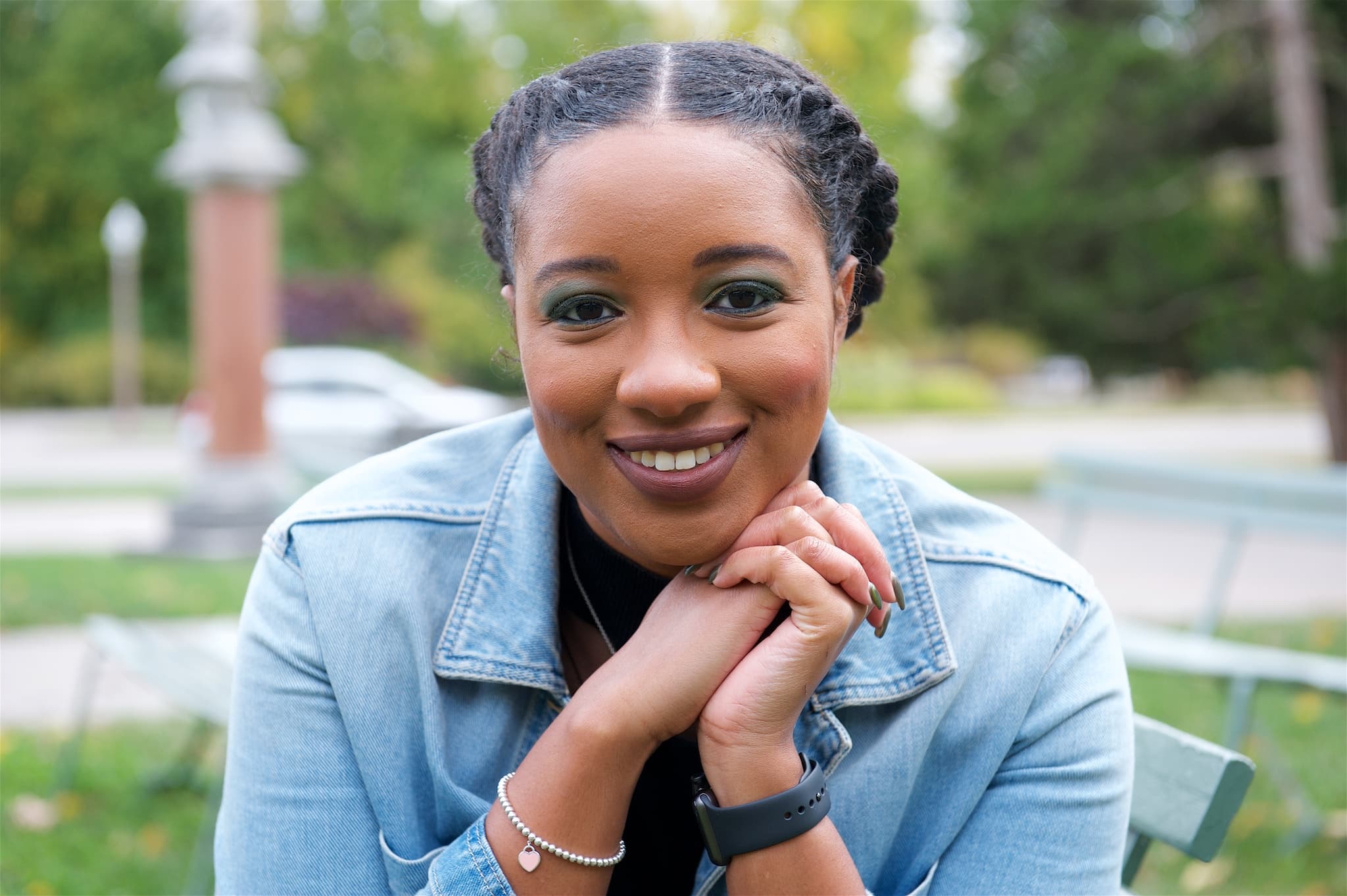
I know so many mechanics and artists who will tell you, “I’m just not good at math. I’m not good at reading. I wasn’t good at school.” And you look at what they’re able to do and create and they are so smart. It’s just that nobody ever told them that. Do you know how hard it is to be a mechanic? Do you know you are essentially a mechanical engineer without the engineering part? They know why a carburetor works. I don’t even know what a carburetor is or what it does, but they understand how it functions. They can draw faces with divine symmetry. They understand Fibonacci sequences and they’re designing all of these beautiful things.
So I looked around these minority communities and I knew so many smart kids in St. Louis, who, if somebody had ever told them that the beats they’re making on their desk are a series of patterns and sequences and, if they could master hearing that, they can visualize that and write code. But who was helping them think that far? Perhaps it’s because they didn’t have the money or resources. Or, it’s because that opportunity didn’t exist in their community. But, literally, five minutes away, in the affluent neighborhood over, kids were getting that type of education, inspiration, and affirmation.
When I think about how I use that story for Navigate STL Schools to change things, there are so many parents who want their kids to be in these types of environments. And either the parents themselves don’t know that they exist or they don’t know how to get those resources for their children. And that’s really what our organization is trying to do.

St. Louis’s education system is broken because of classism, racism, policies, and politics. In 2014, this group of parents said, “Hey, I want to know where to send my kids to school. And I don’t want it to be because my cousin’s baby mama’s third cousin’s wife said that this was the place we should go. Where is the empirical data? Where are the test scores? Where are the extracurricular activities? What happens in these buildings?” So they built an online school guide called STLCitySchools where they compiled this type of information for parents in St. Louis. Then they got tired of it and their kids aged out of it. So the advocates built resources around it. They started compiling data, getting test scores, talking to schools, and putting everything in one place. Then they realized, “This is going to be hard for parents to understand. How do we make it accessible? All right, Staci, figure out these problems.” And, boom! That was the point when I came in.
I don’t have kids. I don’t particularly have a large affection toward kids. I love my nieces and nephews, but I’ve never had the desire to be the kindergarten teacher and plant flowers and play with go-carts. Still, I started to think about what my parents could have used when I was in school. Or, if I were a parent, what I would have wanted. Even as an aunt, as a family member, what did I want to know about the schools my little nephews are attending? I started to think about these things and process them from those lenses. At that point, I had worked in education for 10 years. And when I saw the raw data for Navigate STL Schools, it was like, “No, this is not okay. What do we do from here?”
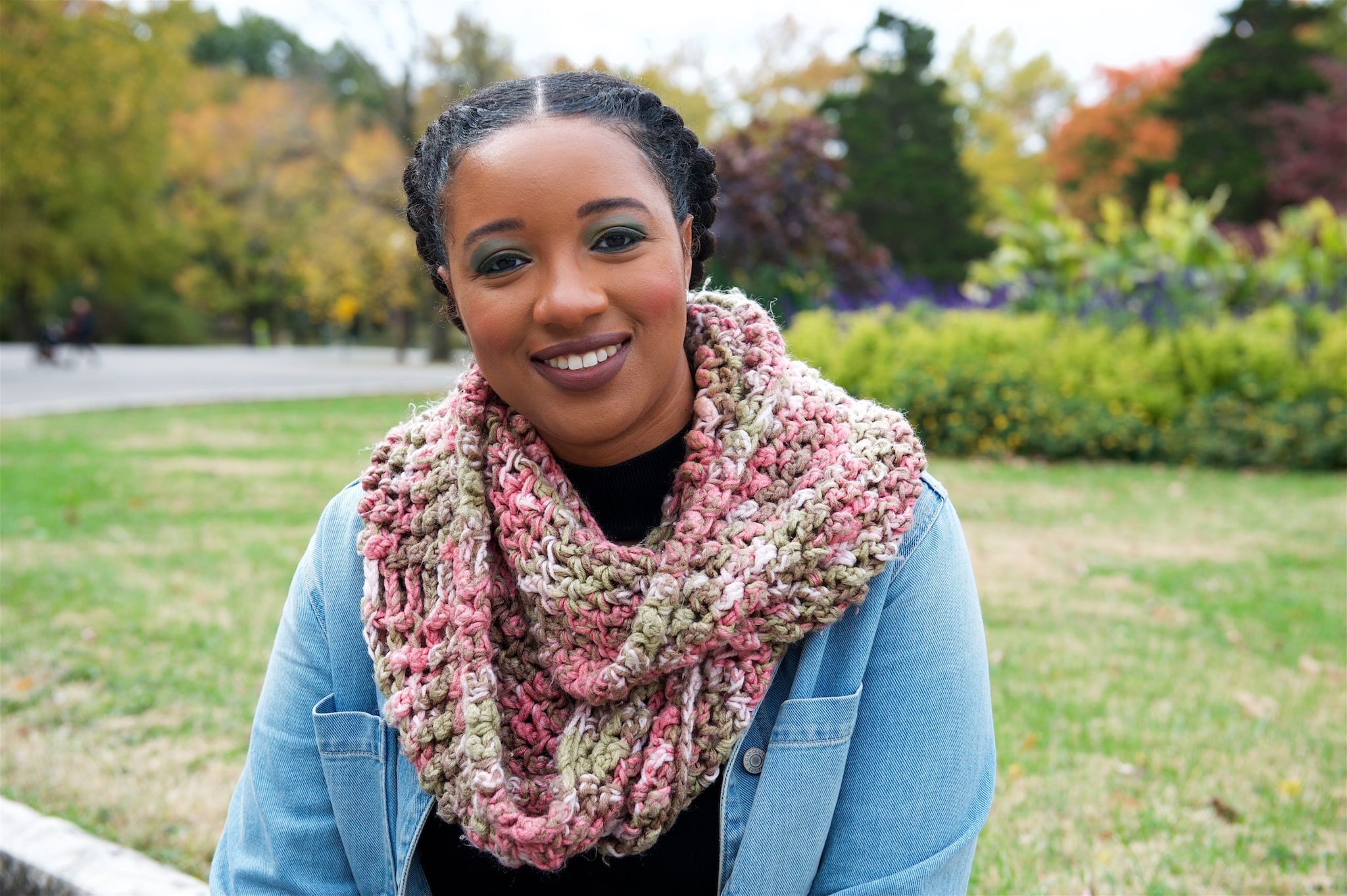
The original group of City advocates had met with over 500 parents, they had run focus groups, and they were asking questions, like, “What do you want the website to look and feel like? What information do you want from schools?” I started talking to parents and people, asking, “What help do you want? What could we do for you? What would make this site useful? Outside of the product, what services do you want?” When I started to talk to parents about the raw information that was there, the number one thing I was shocked about, but not, was the number of parents saying, “I can ask this question? This thing isn’t standard? This isn’t something that happens at all schools? I have options? All charter schools aren’t evil? All public schools aren’t good? This doesn’t mean what I think that it means?”
And when I started having these conversations and talking to parents about the ways they could be empowered, or even the ways they thought their kids were special, and showing them there are different types of schools that can cater to that, that was eye-opening for a lot of people. The thing that threw me the most is that a lot of parents are unhappy with what other people think are these high-performing or “good” schools. And they don’t know how to say that their kid isn’t doing well or that they aren’t happy there as a family, because then they think, “Something must be wrong with my kid if they can’t succeed in this environment.” But really it’s just that everybody is not the same. Our goal is breaking it down on an individual family level.
– Anna-Stacia Allen, Executive Director, Navigate STL Schools
Part two of Staci’s story will be released in Jan 2021!